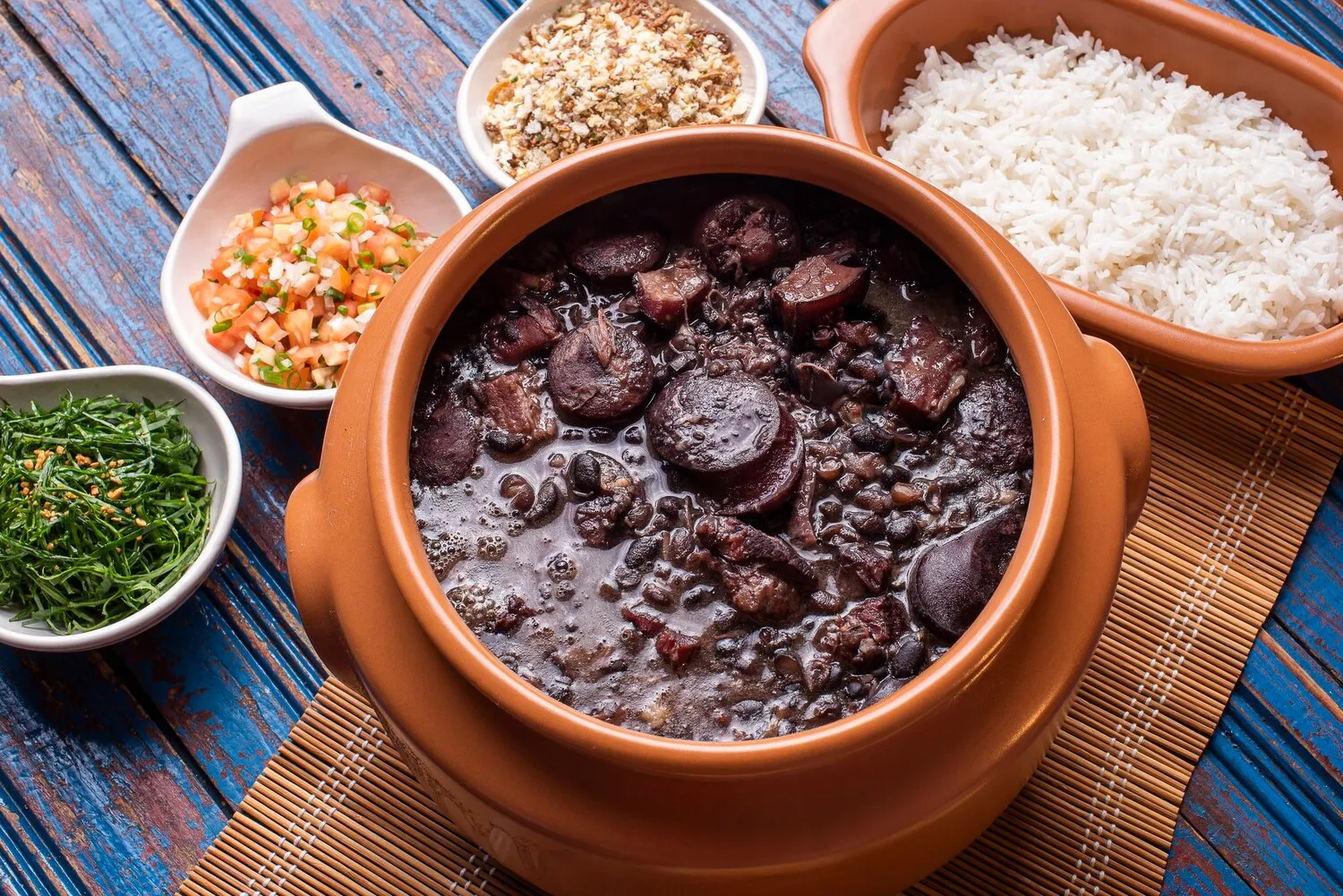
Feijão Tropeiro
A classic Minas Gerais dish made with beans, sausage, bacon, eggs, and cassava flour.
Nutrition Facts
* The % Daily Value (DV) tells you how much a nutrient in a serving of food contributes to a daily diet. 2,000 calories a day is used for general nutrition advice.
Feijão Tropeiro's origins are deeply rooted in the history of Minas Gerais, Brazil. It emerged during the colonial period, specifically with the 'tropeiros,' or muleteers, who traversed the region transporting goods, especially cattle and supplies. These travelers needed a hearty, easily portable, and long-lasting meal, giving rise to the dish.
Feijão Tropeiro is more than just a meal; it is a symbol of Minas Gerais' history and cultural identity. It represents the resilience, resourcefulness, and culinary traditions of the region.
Symbol of the Tropeiros
The dish is a direct descendant of the food prepared and consumed by the 'tropeiros,' reflecting their nomadic lifestyle and the need for practical and nourishing sustenance.
Regional Pride
Feijão Tropeiro is a source of regional pride in Minas Gerais, often featured in festivals, restaurants, and home kitchens as a quintessential example of the state's cuisine.
Communal Dish
Traditionally, Feijão Tropeiro is served in large portions, making it ideal for sharing among family and friends, reinforcing its association with community and togetherness.
Feijão Tropeiro offers a savory and smoky flavor profile with a delightful textural contrast. The combination of beans, meats, eggs, and cassava flour creates a robust and satisfying experience.
The dominant flavors stem from the slow-cooked beans, which provide an earthy base. The sausage and bacon introduce smoky and salty notes, while the eggs add richness and creaminess. The cassava flour, or farinha, contributes a slightly nutty and crumbly texture, absorbing the flavors of the other ingredients and providing a pleasant mouthfeel. Some variations include collard greens (couve), which adds a slightly bitter and vegetal counterpoint.
Bean Preparation
Soak the beans overnight to reduce cooking time and improve digestibility. Cook them until tender but not mushy, retaining their shape.
Cassava Flour Consistency
Gradually incorporate the cassava flour to avoid clumping and achieve the desired crumbly texture. Toasting the farinha beforehand can enhance its flavor.
Meat Quality
Use high-quality sausage and bacon for the best flavor. Smoked varieties are preferred for adding depth to the dish.
Collard Greens (Couve)
If adding collard greens, thinly slice them and sauté separately before incorporating them into the dish. This will prevent them from becoming overly bitter or tough.
Egg Cooking
Cook the eggs separately to your liking (scrambled, fried, or hard-boiled) and then add them to the dish at the end. This ensures they don't become overcooked.
Explore additional Traditional Dish dishes and restaurants
Explore Traditional DishDiscover top dining spots and culinary experiences in Barretos.
Explore BarretosLearn more about the food culture, restaurant scene, and culinary heritage of Brazil.
Explore Brazil